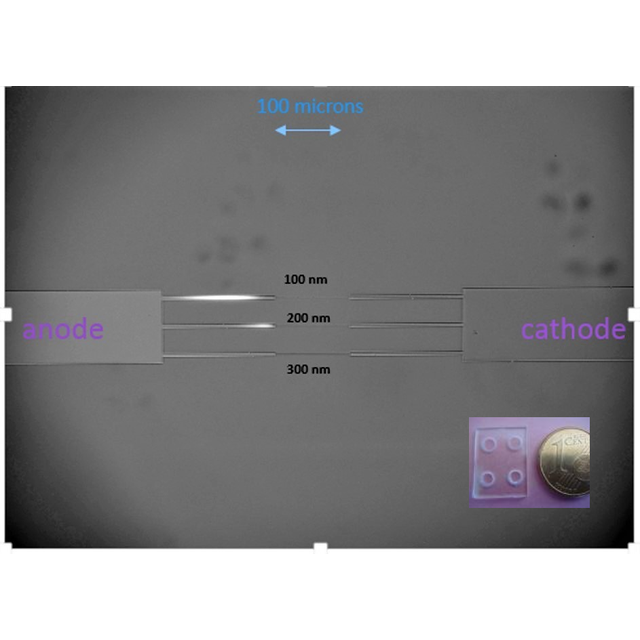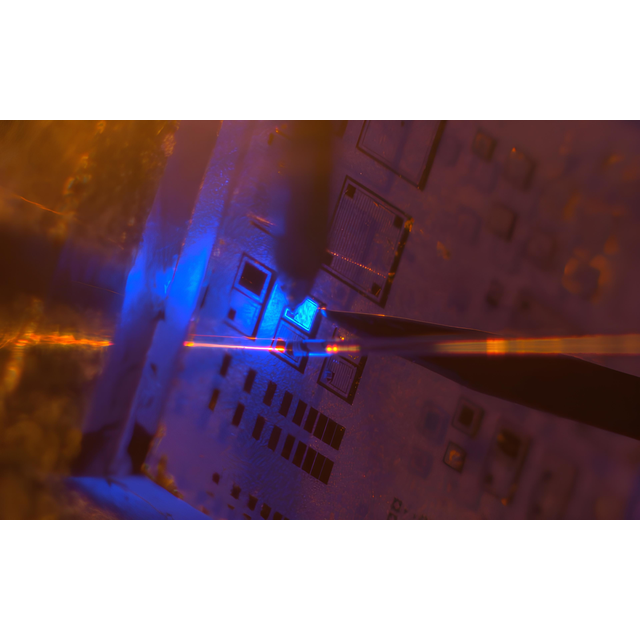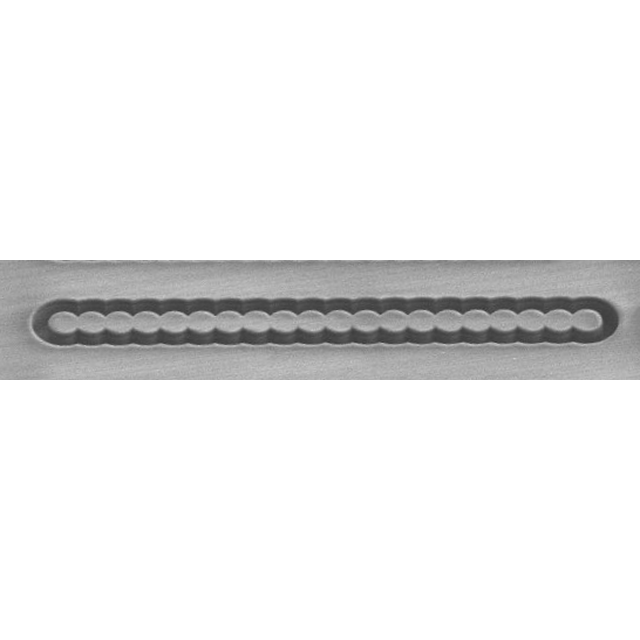This article was first published in the CNRS – La lettre Innovation in February 2018, under « Patents and licences ».
A team from the Centre de Nanosciences et de Nanotechnologies/Center for Nanoscience and Nanotechnology (C2N)1 has developed a microfluidic chip integrating a series of nanochannels. Under a specific electrophoretic protocol this new nanofluidic chip produces a fluorescence « barcode », which acts as a specific signature of the target biomolecule. This new technique enables the determination of molecular concentration and identification in just a few minutes, in contrast to several hours to several days with previous techniques.
In order to concentrate and identify very dilute molecules in a solution (biological markers, pollutants, toxins...), the techniques currently available require hours, sometimes days of manipulation. The biochip invented2 at the Centre de Nanosciences et de Nanotechnologies (C2N)1 makes it possible to perform such analyses in a few minutes. Thanks to slots of different nanometric size, this biochip concentrates molecules in focal points which are located upstream or downstream relative to each nanochannel producing a « barcode », that is simply readable by optical fluorescence.
The microfluidic chip of C2N is based on the well-known principle of electrophoresis to separate molecules: the more or less rapid migration of ions in a solution in an electric field, according to their mass and their electric charge. But the researchers have in addition used a different phenomenon, also studied for years in the laboratory, the « electropreconcentration ». Indeed, their microfluidic device – a chip on a glass – contains an element of even smaller size: a nanochannel of a few tens of nanometers in width. This nanometric channel has a high selective permeability that creates areas in the microfluidic circuit where the investigated molecules are locally concentrated. If these molecules have been marked fluorescently, they form a spot detectable by optical reading. Better: the researchers found a way to realize several nanochannels in parallel on a single chip. These channels have different widths, so that their effect can be modulated by acting on the pressure applied in the microfluidic circuit, generating a series of fluorescent spots which form a « barcode » that is specific to the molecule to be identified. A patent has been filed for the particular geometry of the chip, with several adjacent nanometric channels in the vertical direction2.
The principle, validated with a model molecule (fluorescein), will be further tested with real biological solutions or samples containing pollutants or toxin markers. «We want to build a compact and transportable test bench, in order to work more easily with our partners», says Anne-Marie Haghiri, CNRS researcher at C2N. Presently, the fabrication of the chips is realized using electron-beam lithography. But it may be possible to use nano-printing techniques, which are less time-consuming and better suited for mass production. In the meantime, the laboratory continues to explore the fundamental phenomena that govern the efficiency of chips with nanochannels.
1 CNRS / Université Paris-sud
2 Patent FR1660855 in CNRS proprety, registered on 9/11/2016
Contact: Anne-Marie Haghiri-Gosnet, CNRS researcher at Centre de nanosciences et de nanotechnologies (C2N)









